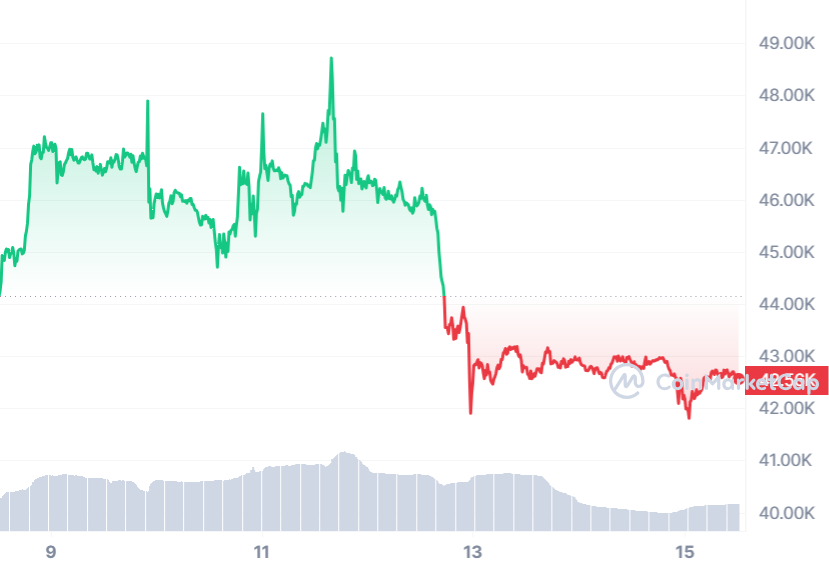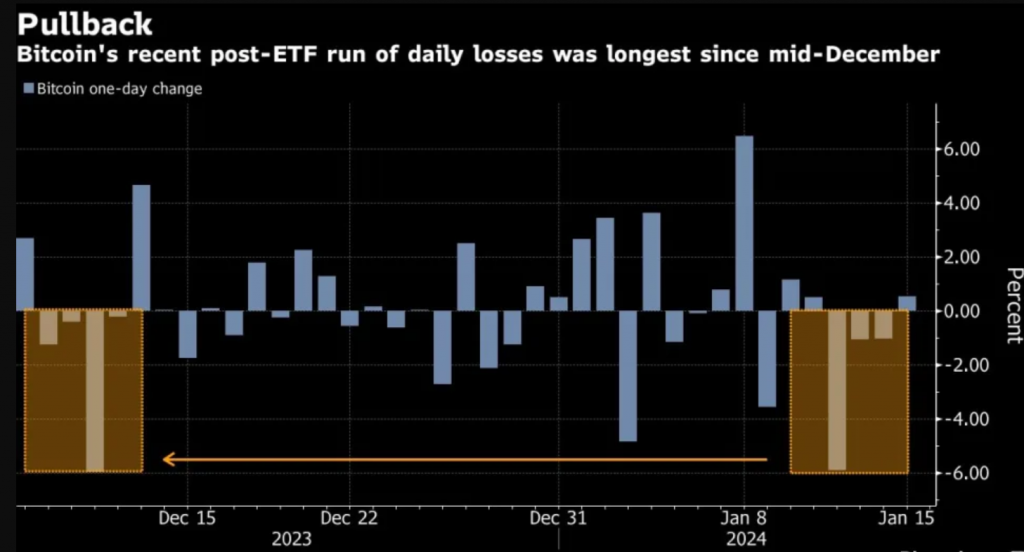Bitcoin experienced its most significant decline in nearly a month as the excitement surrounding the new US exchange-traded funds (ETFs) for the leading digital asset waned.

The cryptocurrency fluctuated between gains and losses, settling around $42,655 by 1:42 p.m. on Monday in Singapore. This marked a three-day consecutive drop through Sunday, the lengthiest losing streak since mid-December. Meanwhile, smaller cryptocurrencies showed mixed results, with Ether, the second-ranked coin, decreasing and BNB advancing.
A series of almost a dozen ETFs, including those from investment giants BlackRock Inc. and Fidelity Investments, commenced trading on January 11. Bitcoin briefly surged to a two-year high above $49,000 after the ETFs were launched but subsequently started to retreat.
This sudden spike and subsequent reversal exhibit characteristics of a “buy-the-rumor, sell-the-fact reaction,” as noted by Tony Sycamore, a market analyst at IG Australia Pty. He anticipates a potential decline to the $38,000 to $40,000 range based on signals from Bitcoin’s chart patterns.
Proponents of Bitcoin as a store of value argue that the introduction of the first US spot ETFs for the token signals increased investor access to cryptocurrency. Skeptics, however, point to the deep crypto crash and bankruptcies in 2022 as reasons for caution about broader adoption, despite a partial market rebound last year.

In a post on the social-media site X, Eric Balchunas, Bloomberg Intelligence’s senior ETF analyst, revealed that the new US spot funds attracted a net inflow of $819 million over the initial two days of trading. This included $500 million for BlackRock’s iShares Bitcoin Trust and $422 million for the Fidelity Wise Origin Bitcoin Fund.
The Grayscale Bitcoin Trust, with assets totaling $26 billion, experienced outflows of $579 million after converting into an ETF last week, according to Balchunas. The fund, which previously had a closed-ended structure and traded at a discount to its underlying holdings last year, saw some betting on the narrowing of this gap.
Noelle Acheson, the author of the Crypto Is Macro Now newsletter, suggested that speculators cashing in on profits from the Grayscale Bitcoin Trust trade, now that the discount has diminished, could be a contributing factor to Bitcoin’s recent weakness. She stated, “It’s very unlikely that all the outflows from the Grayscale Bitcoin Trust went back into Bitcoin,” adding that the new funds are likely to see continued strong inflows in the short term as money on the sidelines is directed in, coupled with the activation of marketing efforts. However, this might be offset temporarily by more outflows as speculative positions are unwound.
